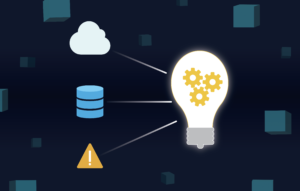Jason Elliott
Technical Writer
Jason has five years of experience as a technical writer. Jason has coordinated with cross-functioning teams to adapt complex information to tasks, references, and other contextual aid.
What Is Data Loss Prevention?
Data Loss Prevention (DLP) solutions comprise of the tools used with the supporting DLP strategies of the organization to help prevent and mitigate data breaches and data leaks that maliciously take, destroy, or lock access to sensitive data. Since the accelerated shift to work from home because of the COVID-19 pandemic, data breaches have increased significantly in frequency as both an internal and external threat. This raises the importance of implementing a DLP solution and strategy for organizations big and small.
In this blog post, we will review what defines DLP, how it works, why organizations need it, the types of DLP solutions available, and how to get started with a DLP strategy.
Defining Data Loss Prevention
DLP is a part of comprehensive data security at an organization that focuses specifically on the following goals:
- Assess the sensitive data in an organization
- Account for potential vectors of risk such as ransomware and user mismanagement
- Implement DLP policy with the help of DLP solutions
DLP policies and DLP technology solutions provides on-going, real-time, and adaptable protection to prevent, detect, and mitigate data loss and data leakage incidents.
How DLP Works
DLP solutions are put in place at data locations with potentially sensitive information. Through either a custom-made software policy or a scanning tool, the DLP solution identifies and monitors that sensitive information to enforce DLP at a given endpoint. Only the appropriate users and groups access, modify, or use said data in a secured workflow, and allowed users can still be warned when an attempted file action risks violating the DLP policy in place. This helps to enforce a DLP policy within the organization and keep data handling requirements fresh in people’s minds after training.
The means DLP solutions use to identify and monitor sensitive data include techniques such as dictionaries, rules, file matching, and regular expressions. Such techniques keep the DLP solution on task with changing data. DLP solutions, in turn, can detect and help prevent or mitigate potential or active data loss incidents as they occur.
Why Organizations Need DLP
DLP solutions and strategies provide protection and mitigation against the most common endpoints and vectors of data loss, whether by phishing and ransomware attacks sent by email, insider threats from compromised user accounts, or external threats by theft of external and mobile devices or exposure to public internet. Without DLP, organizations are left vulnerable to a damaging data breach that can compromise and destroy sensitive data, such as intellectual property, financial data, and confidential data. Such a data breach incurs legal, financial, and reputational costs that can last for years.
Types of DLP Solutions
DLP solutions have different degrees of available protection. How comprehensive DLP strategy must be can determine the type of DLP solution used by an organization, and its ability to scale to evolving security needs.
Organizations first look at the integrated DLP solutions offered by their current data services and security solutions, identify the possible gaps in those tools, and then compliment said solutions with centralized and designated DLP solutions to fill those gaps and work in conjunction with the organization’s overarching data security. The resulting DLP solutions put in place would ideally be centralized and work with broader security tools and standards such as SIEM systems and zero-trust authentication, while complementing standard security tools such as IDS and firewalls.
Whatever the resulting scale of the DLP solutions needs to be, they generally cover the following with the help of security teams:
- Securing data in use, at motion, or in rest
- Identifying data
- Securing endpoint access
- Detecting leaks
Classify360 Helps You Get Started with DLP
Classify360’s data governance tools provide an excellent starting point for DLP solutions and strategies. The manage-in-place design of Classify360 helps to securely scan, analyze, and act on sensitive data at the source location. This process empowers organizations to prepare their sensitive data for a centralized DLP strategy on an ongoing and automated basis, instead of leaving their sensitive data unaccounted for and potentially open to a breach.
To learn more about DLP, including best practices for DLP strategies, see also our Ultimate Guide to Data Loss Prevention.









